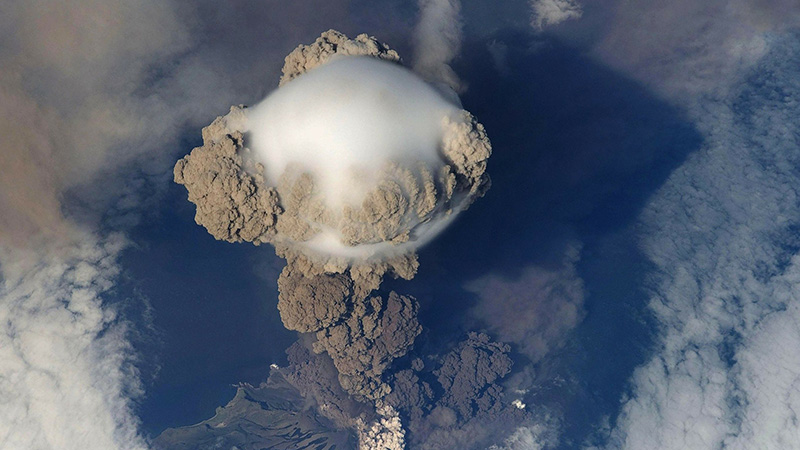Year on year geoengineering appears to be edging closer to mainstream thinking, despite its legion of critics and fears of what tinkering with the atmosphere could cause.
The latest sign comes in a report from the US government – more specifically the US Global Change Research Program (USGCRP) – which was sent to Congress this week.
It’s an update on research plans from 2012-2021, and while there’s a chance these could be defunded under a Donald Trump presidency, it offers a sense of US thinking on the issue.
“While climate intervention cannot substitute for reducing greenhouse gas emissions and adapting to the changes in climate that occur, some types of deliberative climate intervention may someday be one of a portfolio of tools used in managing climate change,” reads the update.
“The need to understand the possibilities, limitations, and potential side effects of climate intervention becomes all the more apparent with the recognition that other countries or the private sector may decide to conduct intervention experiments independently from the US Government.”
Weekly briefing: Sign up for your essential climate politics update
This is not a sign that the US is about to ramp up its geoengineering plans all of a sudden, according to Oliver Morton – author of one of the best books on the subject.
But it is a soft suggestion that the US should start to explore the parameters of how geoengineering experiments could start to be rolled out.
“An immediate next step for USGCRP is defining the scale and scope of observations and modelling capabilities necessary to detect the signal of any future field experiments above baseline conditions and natural variability, and to evaluate their consequences,” the report recommends.
“Such research would also define the smallest scale of intervention experiments that would yield meaningful scientific understanding.
“USGCRP will use its scientific understanding of natural processes, such as natural carbon sequestration or dynamics of atmospheric particulates, to inform potential pathways for carbon removal and albedo modification.”
Geoengineering could take various forms, from injecting sun-blocking sulphur particles in the atmosphere, to seeding the oceans with iron fertilisers to draw CO2 from the atmosphere. All are highly controversial and despite a push from Russia was not included in the UN’s Paris climate agreement as a potential pathway to control global warming.
Modelling by scientists at the UK Met Office has highlighted the danger that plans to deflect solar rays by spraying fine particles in the northern hemisphere atmosphere could disrupt weather patterns and cause drought in the Sahel.
But given the world is on a record run of hot years, and given scientists recorded a significant leap in concentrations of carbon dioxide in the atmosphere through 2015 and 2016, it offers an option.
During 2015 and 2016, atmospheric CO2 at Mauna Loa jumped by +5.8 ppm: Highest growth in any 2-year period on record pic.twitter.com/rMqZatuxZU
— Kees van der Leun (@Sustainable2050) January 11, 2017
Last year countries at the UN’s biodiversity summit indicated a widespread unwillingness to authorise large-scale experiments, but left the door open for smaller trials.
Simon Nicholson – a professor in international relations at American University who focuses on climate engineering – described the US intervention as “ironic and extraordinarily sad”.
Speaking to Science Magazine, he said the idea you could circumvent traditional carbon cutting policies with a bit of atmospheric magic could prove a distraction.
“The most important work to do with the new administration is to be sure they keep intact important international work on climate mitigation and adaptation.”
Another sign that geoengineering is starting to be discussed at the top level came on Wednesday with the launch of the World Economic Forum’s annual Global Risks Report.
It’s likely this is the first time the issue got a mention, Morton reports on his Medium blog, and that’s not down to one or two wacky writers, but a poll of governments, business and academia.
The data from the poll suggests there’s a lack of confidence in technologies like solar radiation management (SRM) to deliver net benefits, and fears it could lead to the polar opposite.
Report: UN to extend freeze on climate change geoengineering
What the report does offer is a sense of how further studies could be regulated, emphasising the dangers of governance regimes that fail to generate trust and awareness among the public.
“For example, autonomous vehicles will inevitably cause some accidents; whether this leads to calls for bans will depend on whether people trust the mechanisms that have been set up to govern their development,” it says.
Work on better global governance is underway: former State Department climate official Andrew Light and Ban Ki-moon’s ex climate advisor Janos Pasztor are among those working on initiatives.
As Morton argues, it’s a fairly light start from the WEF, but perhaps a sign that we’ll see more of this debate in the coming years.
“It would be interesting to see the WEF engage more on this, though there is no evidence that they will do so at this year’s Davos meeting,” he writes.
“It might be a bit tricky for them; in general their model of technology is one that fits it into business practices and concerns, an approach that makes sense for things like IT and biotech, but not so much for geoengineering.
“But they have at least opened up some data on what people are thinking, and that’s a help in itself.”
